Outreach Trip to Northern Mongolia (Part 1)

The US Embassy’s Public Affairs Office in Mongolia “conducts educational and cultural exchanges, manages press and information activities, and administers the Embassy website.” While this may sound simple, they go to amazing lengths to engage rural communities on the frontier of diplomacy! In my experience working with them, the PAO staff’s efforts to advertise State Department-sponsored exchange programs, educational resources, and grants for community development projects (among many other initiatives) are extraordinary. In April of 2014, we Fulbright English Teaching Assistants had the pleasure of accompanying and assisting the US Embassy personnel based in Ulaanbaatar on their most recent outreach trip. We traveled to Selenge and Hovsgol aimags (northern Mongolian provinces). Our PAO/Fulbright group covered over 2,000 kilometers in seven days of official visits, meetings, and press events.
During school visits we Fulbright ETAs lectured about higher education in the United States with the help of translators, led hands-on activities for students, and met with administration officials to discuss possible areas of collaboration. In under-served and underrepresented “soms,” or small rural townships, my colleagues and I were interviewed on national and regional television and radio shows to advertise programs for study and professional development in the United States. We ETAs assisted with live lectures at public venues for interested Mongolians to find out more about State Department programs. We also met with local government officials and NGO leaders to discuss partnerships and funding opportunities from the US Embassy.
It was an intense and rigorous trip but it was a blast! Our group also had fun opportunities to enjoy the local culture, history, and geography where we traveled. Let’s review some of the highlights of the week in photos!
“Mother Tree” – Selenge Aimag
Our first destination along the route was the famous ” Mother Tree.” A popular pilgrimage site, many Mongolians venture a half day trip outside of the capital city to share their secret wishes with the benevolent spirit. In the form of whispers or scribbled notes, they leave their requests at the base of the tree. Walking under the colorful, adorned branches visitors spoon milk, fermented mare’s milk, or vodka into the air towards its tremendous trunk. Others throw rice!

Ag Mod, or “Mother Tree.” An elderly woman presents offerings of milk to a large table, hoping the tree will grant her wishes!

What other gifts do people give to the Mother Tree? Take a look! Milk, juice, vodka, soda, crackers, cookies, candy, cheese, dried curd, butter…

An elaborate shrine covered in prayer flags near the Mother Tree. Mongolians walk three times around these “ovoos” and throw rice, milk, vodka, and even rocks on the shrine.
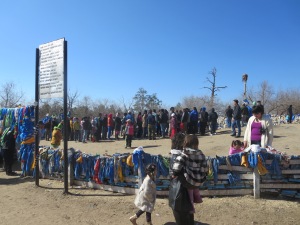
People are lined up to pay respects to the original (Grand?)Mother Tree, that was burned down by the Soviets many years ago. Only the stump remains but it’s even more popular than the current one.

To show respect as one leaves he or she is supposed to back out and bow his or her head, like in a Buddhist monastery.
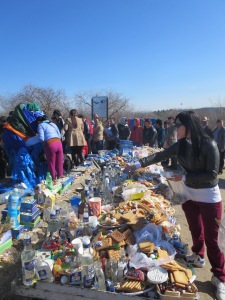
In the foreground a woman presents a gift to the elder mother tree while in the background another bows and presses her forehead against the decorated stump.

Three generations pay homage to the elder mother tree! Wearing a herder’s “dell” and several layers of prayer flags, this is probably one of the world’s most popular tree stumps!

The rock walls of the enclosure are entirely covered in milk bottles, prayer scarves, rice, candies and dried milk.
Russian Border – Selenge Aimag
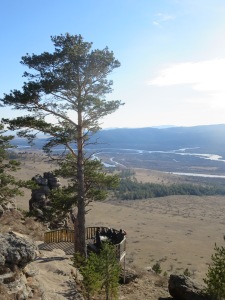
Another far more picturesque balcony overlooks a river valley separating Russian Siberia and Mongolia.
TV Interview Time!

Prepping for the big interview! They made a great impression on the viewers and talked about the great scholarships out there available to Mongolians!
School Visits!

Getting set up to lecture about American colleges and universities to a students audience in Sukhbaatar, Selenge.
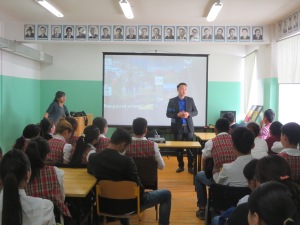
Looking dapper, Ideruugan tells students about his personal story of growing up in a herding family and eventually earning a coveted scholarship to study English in the US.

Students paid great attention to what we had to say, hoping for chances to study abroad! Many students asked if it was possible to continue their education at all after high school.
Stay tuned for photos from the second half of the trip based in snowy Hovsgol! Here’s a few teasers of what’s to come in the next installment!

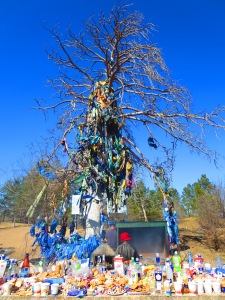

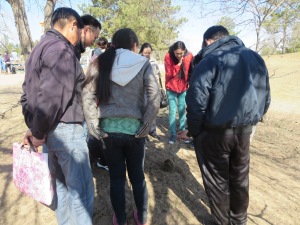
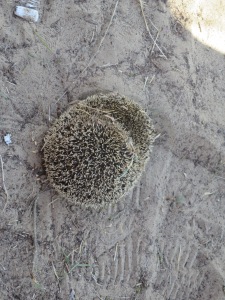






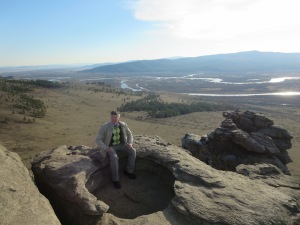

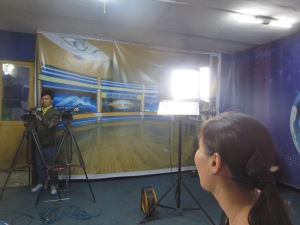

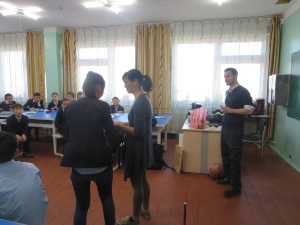






Recent Comments